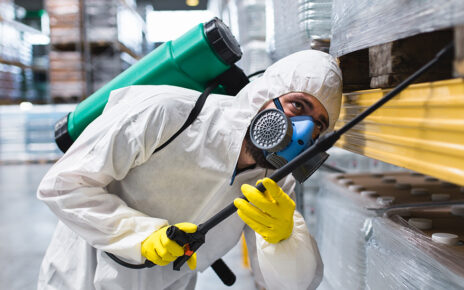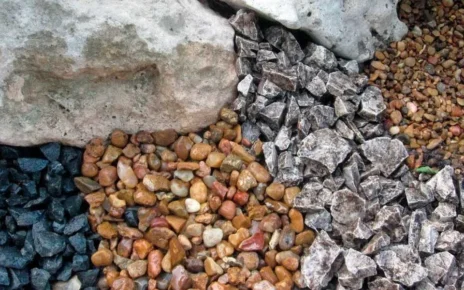Key Properties of Asbestos Fibers
Asbestos fibers are incredibly durable and resistant to heat, making them a popular choice in various industries for decades. These fibers are naturally occurring and belong to a group of silicate minerals. Their fibrous structure is what makes them both useful and dangerous. The fibers can be split into tiny, needle-like pieces that are lightweight and easily airborne. This unique combination of properties—fire resistance, strength, and flexibility—has historically made asbestos valuable in construction and manufacturing.
Common Uses in Construction and Industry
Asbestos was once a go-to material for many applications due to its versatility. Some of the most common uses include:
- Insulation for pipes and boilers to prevent heat loss.
- Roofing materials like shingles and tiles.
- Fireproofing sprays and coatings applied to steel beams.
- Brake pads and clutches in vehicles.
- Cement products, such as sheeting and pipes, for added durability.
These widespread applications highlight the material’s practical benefits, but they also underscore the risks of exposure during installation or deterioration.
Health Risks Associated With Asbestos
Despite its usefulness, asbestos poses serious health hazards. When disturbed, its fibers can become airborne and, if inhaled, lodge in the lungs. Over time, this can lead to diseases such as asbestosis, lung cancer, or mesothelioma. The U.S. Environmental Protection Agency has classified asbestos as a known carcinogen, emphasizing the need for careful handling and removal. Prolonged exposure is particularly dangerous, as symptoms often take decades to appear, making early detection challenging. This dual nature of asbestos—its utility and its risks—has led to strict regulations and widespread efforts to phase it out of use.
The Role of Weather in Material Deterioration
Impact of Temperature Fluctuations
Temperature swings, especially those that occur between day and night or across seasons, can significantly weaken materials over time. When temperatures rise and fall, materials expand and contract. This repeated stress can cause cracks to form, especially in rigid materials like concrete or brittle asbestos-containing products. Over time, these small cracks can grow, compromising the structural integrity of buildings and other constructions. Temperature extremes, such as intense summer heat or freezing winter conditions, exacerbate the issue, accelerating the process of deterioration.
Effects of Moisture and Humidity
Moisture is one of the most persistent challenges when it comes to material degradation. Rain, humidity, and even condensation can seep into porous materials, leading to swelling or softening. For asbestos-containing materials, prolonged exposure to water can weaken their binding agents, making them more prone to releasing harmful fibers. Humidity, in particular, can exacerbate the problem by creating a damp environment where deterioration happens faster. The combination of moisture and time often results in additional problems, such as mold growth or corrosion of supporting structures.
Wind and Its Influence on Structural Integrity
Wind may seem harmless compared to other weather elements, but it plays a significant role in wearing down materials. High winds can carry abrasive particles like sand or dust, which gradually erode surfaces. Over time, this erosion can thin out protective layers, leaving underlying materials exposed to further damage. Additionally, strong winds can loosen fixtures or cause mechanical stress, leading to cracks or other structural issues. In areas prone to frequent storms, wind damage becomes a major factor in the overall deterioration of materials.
How Time Contributes to the Breakdown of Asbestos Materials
Aging and Material Fatigue
Over time, asbestos-containing materials naturally weaken due to aging. This process, known as material fatigue, occurs as the fibers and binding agents within the material lose their integrity. Repeated stress from environmental and structural factors accelerates this wear and tear. For example, older asbestos cement used in roofing or siding can become brittle, leading to cracks and fractures. As these materials degrade, they pose a greater risk of releasing harmful fibers into the air, especially when disturbed.
Chemical Changes Over Time
Chemical reactions within asbestos materials also contribute to their deterioration. When exposed to pollutants or certain environmental conditions, the binding agents that hold asbestos fibers together can break down. This is particularly true in areas with high levels of airborne contaminants, which can react with the material’s surface. Over decades, these reactions weaken the structure, making it more prone to damage. It’s crucial to understand these changes when assessing the long-term safety of asbestos-containing materials, as even minor damage can release fibers.
Long-Term Exposure to Environmental Factors
Long-term exposure to environmental elements, such as moisture, sunlight, and fluctuating temperatures, plays a significant role in the breakdown of asbestos materials. Moisture, for instance, can seep into cracks, causing swelling and further weakening the material. Similarly, prolonged UV radiation can degrade the outer layers, making them more fragile. Seasonal changes, including freeze-thaw cycles, also place stress on these materials, leading to gradual deterioration over the years. Regular inspection and maintenance are essential to mitigate these risks and ensure the safety of structures containing asbestos.
Moisture and Its Effects on Asbestos-Containing Materials
Water Absorption and Swelling
When asbestos-containing materials (ACMs) are exposed to water over time, they can absorb moisture, leading to physical changes such as swelling. This process weakens the structural integrity of the material, making it more prone to cracking or breaking. Prolonged exposure to moisture can also increase the likelihood of asbestos fibers being released into the environment, posing serious health risks. For instance, materials like asbestos cement, often used in roofing or pipes, are particularly vulnerable to water damage.
Corrosion of Supporting Structures
Moisture doesn’t just affect the asbestos materials themselves; it also impacts the structures supporting them. Metal components, such as screws, beams, or brackets, can corrode when exposed to damp conditions. This corrosion weakens the entire system, potentially causing the asbestos material to deteriorate faster. Moreover, the combination of rust and asbestos particles can create an even more hazardous environment, especially in industrial settings where environmental asbestos exposure is already a significant concern.
Mold Growth and Secondary Damage
Damp conditions are a breeding ground for mold, which can grow on or near asbestos-containing materials. Mold not only causes additional damage to the material but also introduces new health hazards. The presence of mold can exacerbate the breakdown of ACMs by creating micro-cracks and further weakening the structure. In some cases, water-damaged asbestos materials can also contaminate nearby resources, such as drinking water, leading to asbestos contamination in drinking water. This scenario underscores the importance of addressing moisture issues promptly to prevent compounded risks.
The Influence of UV Radiation on Asbestos Materials
Surface Degradation Due to Sunlight
When asbestos-containing materials are exposed to direct sunlight over long periods, the ultraviolet (UV) radiation can cause their surfaces to break down. This process, known as photodegradation, weakens the material’s outer layers, making them more prone to cracking and crumbling. Over time, these surface changes can lead to the release of harmful asbestos fibers into the environment. In regions like Australia, where intense sunlight is common, this degradation poses a serious concern for both structural integrity and public health.
Changes in Material Strength
UV radiation doesn’t just affect the surface; it can also alter the internal structure of asbestos materials. Prolonged exposure can lead to a loss of elasticity and increased brittleness. This makes the material more susceptible to physical damage, such as impacts or vibrations. In areas with deteriorating roofs, these changes can amplify health risks, especially during storms or hail, when weakened materials are more likely to release asbestos fibers into the air. Deteriorating roofs in Australia are a prime example of how UV damage can contribute to these risks.
Protective Measures Against UV Damage
To mitigate UV-related deterioration, several protective strategies can be employed:
- Application of UV-resistant coatings: These coatings help shield the material from harmful radiation, extending its lifespan.
- Regular inspections: Periodic checks can identify early signs of UV damage, allowing for timely repairs or replacements.
- Shading structures: Installing barriers or shades can reduce direct sunlight exposure, particularly in high-risk areas.
Taking these precautions not only helps maintain the structural integrity of asbestos-containing materials but also reduces the likelihood of fiber release, safeguarding public health and the environment.
Seasonal Variations and Their Impact on Asbestos Deterioration
Winter Freeze-Thaw Cycles
Winter brings unique challenges to asbestos-containing materials. When water seeps into tiny cracks or pores in the material and freezes, it expands, causing the cracks to widen. Over time, this repeated freeze-thaw cycle weakens the structural integrity of the material. This process can significantly accelerate the breakdown of asbestos products, making them more prone to releasing harmful fibers into the environment. In urban areas, where asbestos exposure is already a concern, such seasonal effects can heighten risks. For instance, studies have shown that airborne asbestos fibers are more likely to be released during colder months due to this cycle.
Summer Heat and Expansion
High temperatures during summer can cause asbestos materials to expand. This expansion isn’t uniform and can lead to internal stress within the material. Over time, these stresses can create fractures or exacerbate existing ones. In buildings where asbestos is used for insulation or roofing, prolonged exposure to summer heat can weaken these materials, increasing the risk of fiber release. Property owners should remain vigilant during this season and consider protective measures like coatings to mitigate heat damage.
Autumn and Increased Moisture Levels
Autumn often brings increased rainfall and humidity, which can have a direct impact on asbestos materials. Moisture can seep into the material, causing it to swell and lose its rigidity. Over time, this can lead to a breakdown in the material’s structure, particularly if it is already compromised. Additionally, damp conditions can promote mold growth on or around asbestos-containing materials, leading to secondary damage and further deterioration. Regular inspections during this season are critical to identifying early signs of damage and preventing long-term issues.
The Role of Airborne Pollutants in Accelerating Deterioration
Chemical Reactions With Pollutants
Airborne pollutants, such as sulfur dioxide and nitrogen oxides, interact with materials over time, leading to chemical reactions that weaken their structural integrity. For asbestos-containing materials, these reactions can alter their composition, making them more brittle and prone to breakage. One significant concern is the formation of acidic compounds, which can erode surfaces and compromise the material’s durability. The presence of pollutants in the air is often tied to factors like economic growth and energy consumption, both of which contribute to increased emissions air contamination.
Deposition of Particulate Matter
Particulate matter (PM) in the air, including dust, soot, and other microscopic particles, settles on exposed surfaces of asbestos materials. Over time, this deposition creates a layer that traps moisture, accelerates wear, and fosters the breakdown of the material’s outer layers. The issue is particularly severe in urban and industrial areas where PM concentrations are high. Chronic exposure to particulate matter has also been linked to health risks, such as lung inflammation and tissue damage inhaling particulate matter.
Impact on Structural Longevity
The combined effects of chemical reactions and particulate deposition significantly reduce the lifespan of asbestos-containing materials. As pollutants accumulate, the material’s ability to resist environmental stressors diminishes, increasing the likelihood of cracks, fractures, and fiber release. This not only poses structural concerns but also raises health and environmental issues, particularly in aging buildings. Regular maintenance and pollution control measures are essential to mitigate these risks.
Assessing the Risks of Deteriorated Asbestos Materials
Release of Harmful Fibers
When asbestos-containing materials start to break down, they can release tiny fibers into the air. These fibers are incredibly dangerous if inhaled, as they can lodge in the lungs and lead to serious health issues like asbestosis, lung cancer, or mesothelioma. What makes this particularly concerning is that these fibers are invisible to the naked eye, making them hard to detect without specialized equipment. This is why regular monitoring and an asbestos risk assessment are critical, especially in older buildings undergoing demolition or renovation.
Health Implications for Occupants
The health risks from deteriorated asbestos materials extend to anyone who spends time in contaminated environments. Prolonged exposure increases the likelihood of developing asbestos-related diseases, which often take years or even decades to manifest. For occupants, even short-term exposure can lead to respiratory irritation or other complications. Protecting people in these spaces requires swift action, including isolating affected areas and consulting professionals for safe handling.
Legal and Environmental Considerations
Dealing with deteriorated asbestos isn’t just about health—it’s also a legal and environmental responsibility. Laws often mandate proper identification and management of asbestos in buildings, particularly during construction or demolition projects. Failure to comply can result in hefty fines or legal action. Additionally, improper disposal of asbestos materials can contaminate the environment, posing risks to wildlife and water sources. Adhering to regulations and employing certified professionals ensures both compliance and safety.
Preventative Measures to Mitigate Weather and Time Effects
Regular Inspections and Maintenance
Regular inspections are the backbone of preserving asbestos-containing materials over time. By scheduling routine checks, property owners can identify early signs of wear, such as cracks, discoloration, or surface degradation. These inspections should be performed by qualified professionals who understand the unique risks associated with asbestos. Addressing minor issues early can prevent larger, costlier problems down the line.
Key steps include:
- Inspecting for visible damage like cracks or warping.
- Checking for signs of moisture infiltration or mold growth.
- Ensuring any protective coatings remain intact.
Use of Protective Coatings
Applying protective coatings is an effective way to shield asbestos materials from environmental damage. Coatings act as a barrier, reducing exposure to moisture, UV radiation, and airborne pollutants. For instance, applying a high-quality waterproofing treatment can prevent water damage and extend the material’s lifespan. It’s important to choose coatings specifically designed for asbestos-containing materials to ensure compatibility and safety.
Safe Removal and Replacement Practices
In cases where asbestos materials are severely deteriorated, safe removal and replacement may be the best course of action. This process must be carried out by licensed professionals to minimize the release of harmful fibers. Proper containment methods, such as sealing off the work area and using negative air pressure systems, are essential. Additionally, replacing old materials with safer, more durable alternatives can offer long-term benefits. For example, proactive roof maintenance can prevent costly repairs and ensure structural integrity over time.
Case Studies on Weather and Time-Induced Deterioration
Examples From Residential Buildings
Residential buildings, especially older ones, often serve as a prime example of how weather and time can weaken asbestos-containing materials. Over decades, exposure to moisture from leaky roofs or plumbing can lead to swelling and cracking in structures. One case involved a mid-20th-century home where repeated freeze-thaw cycles caused significant material fatigue. This eventually led to the release of asbestos fibers into the air, posing health risks to the occupants. The combination of aging and environmental stressors accelerated the breakdown of these materials, highlighting the importance of regular inspections and timely interventions.
Industrial Sites and Long-Term Exposure
Industrial environments provide a stark contrast, as they often deal with harsher conditions and larger-scale deterioration. A study at a manufacturing plant revealed that constant exposure to high temperatures and chemical pollutants severely degraded asbestos insulation over 30 years. Workers reported visible cracks and flaking, which increased the risk of airborne asbestos. This case underlined the need for advanced monitoring systems to detect early signs of wear, ensuring both worker safety and structural integrity. For more insights on assessing long-term impacts, see climate projections and real service condition case studies.
Lessons Learned From Historical Cases
Looking at historical cases, one can see patterns that emphasize the need for proactive measures. In one instance, a school building constructed in the 1960s faced severe degradation due to neglect and environmental exposure. Over time, UV radiation and fluctuating temperatures weakened the asbestos ceiling tiles, leading to their eventual collapse. Such examples stress the importance of integrating deterioration factors into models, as discussed in time-temperature dependent deterioration in supply chains. These lessons remind us that understanding past failures can inform better practices for the future.
Technological Advances in Monitoring Asbestos Deterioration
Innovative Detection Methods
Modern technology has reshaped how asbestos deterioration is monitored. One notable advancement is the use of supervised and unsupervised classification methods for identifying asbestos-cement materials, particularly in urban settings. These methods analyze extensive data sets to detect and classify asbestos-containing structures with high accuracy. By leveraging these techniques, researchers and environmental professionals can pinpoint areas of concern more efficiently, reducing the time and resources required for manual inspections. For example, a study on classification methods has shown how these approaches can be applied to urban environments to identify asbestos-cement roofs effectively.
Remote Sensing and Data Analysis
Remote sensing tools, combined with advanced data analysis, have become invaluable in monitoring asbestos materials. Drones equipped with specialized sensors can capture detailed images and thermal data, enabling experts to assess the condition of asbestos-containing structures without direct contact. This approach not only improves safety but also allows for the monitoring of hard-to-reach areas. Artificial intelligence further enhances this process by analyzing collected data in real-time, identifying patterns of wear and degradation. The integration of AI in asbestos detection has made it possible to process large volumes of information quickly, ensuring timely interventions.
Future Trends in Material Preservation
Looking ahead, the development of smart materials and sensors may revolutionize asbestos monitoring. These innovations could include embedded sensors within asbestos materials that provide continuous updates on their condition. Such technology would alert property owners and regulators to early signs of deterioration, preventing the release of harmful fibers. Additionally, advancements in machine learning are expected to refine predictive models, offering more precise forecasts of material lifespan and deterioration rates. The future of asbestos management lies in proactive solutions that combine real-time monitoring with predictive analytics, ensuring both safety and efficiency.
Websites
Robert King Mesothelioma Law Services





